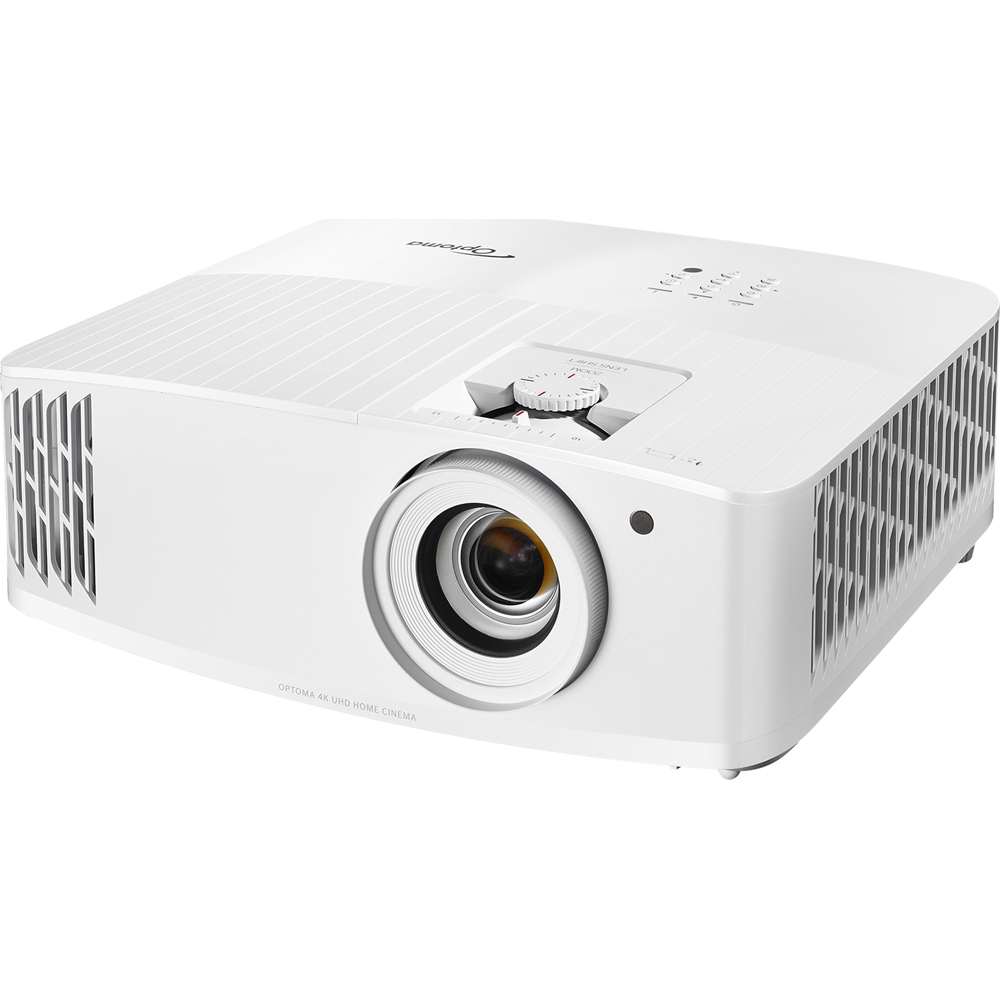

- #Optoma projector uhd50x 1080p#
- #Optoma projector uhd50x Patch#
- #Optoma projector uhd50x full#
- #Optoma projector uhd50x tv#
Most action games of any kind rely on fast reflexes. So, how fast is this projector? This is an all-important thing for gamers. The projector works well with HDR signals.

One last thing on the picture quality: the test patterns on a Sony UltraHD Blu-ray (tap in 7669 on your UHD player's remote when the disc is on the main menu) showed a smooth graduation of black to white, not limited to the mere 256 levels of an 8-bit signal. More surprisingly, 24fps content on Blu-ray and UltraHD Blu-ray also juddered (less obviously) due to conversion to 60fps output.Īs we'll see, this projector does actually support 120Hz signals, so we'd have thought that 24fps stuff could be displayed at 120Hz – each frame repeated five times – for smoother motion.
#Optoma projector uhd50x tv#
PAL-style 50Hz from UK, Australian, and European DVDs and broadcast TV juddered noticeably from the 50-to-60Hz conversion. It seemed, also, that the projector was locked to 60Hz output – or whole multiples of 60Hz. We'd recommend that you feed the projector progressive scan content only. That generated visible artefacts, particularly on things like finely spaced lines.
#Optoma projector uhd50x full#
While it was motion-adaptive – unmoving parts of the frame were properly woven together to deliver full resolution – for moving sections of the image, a simple 'bob' was being used.īob-style deinterlacing takes the first field of the frame and displays it as a full frame for 1/50th of a second, then the second field of the frame, and then repeats for subsequent frames. No attempt was made to detect film-sourced content. It soon became clear that interlaced 50Hz content, both for 1080i50 and 576i50, was simply assumed by the projector to be video-sourced. If it's not quite white, the 'Wall Colour' mode adjusts the picture for a more accurate result on surfaces which are 'Blackboard', light yellow, light green, light blue, pink and grey. There's also a picture setting for those who find themselves resorting to projecting against a wall of their home. But out of the box, the colour settings were very good. You can tweak colours to make them more accurate – or to your taste – if you like. When we switched out the lights, so much the more so. Even under the full glare of our office's two fluorescent tubes, the picture was bold, clear and colourful.

Our test pattern showed clear delineation of its lines and spaces, each of which occupies only one UHD pixel width or height.Īnd bright the projector was.

This difference was virtually unnoticeable with bright material on the screen.ĭid this projector deliver real UltraHD resolution? Indeed it did. We used a meter and found that the brightest section was receiving around 1500 lux, while the dullest corner was treated to only around 800 lux.
#Optoma projector uhd50x Patch#
Without it switched on, black levels were a little muddy and rather uneven, with a brighter patch showing towards the bottom centre of the picture (with the projector operating in desktop mode). But if you switch Dynamic Black on (it's off by default), dark scenes are impressive and blacks are nicely deep. It doesn't offer such things as motion smoothing. In that function it has a fairly basic feature set. First, let's look at the Optoma UHD50X as a home theatre projector. Up to 15,000 hour lamp life delivers many years of use with minimal maintenance when using Dynamic mode.We will get into the that 240Hz thing for gamers later. HDMI 2.0 with HDCP 2.2 support ensures connectivity to the latest 4K UHD devices while a 12V trigger enables control of motorized screens. Optoma HDR tone mapping combined with dynamic contrast presents an optimized image with brighter whites, deeper black levels and realistic colors that jump off the screen for an immersive visual experience. Compatibility with the HDR10 and HLG content ensures the Optoma UHD50X renders vivid 4K UHD content.
#Optoma projector uhd50x 1080p#
PC gamers can take advantage of the ultra-fast 240 Hz refresh rate for blur-free visuals with outstanding smoothness while consoles can opt for 1080p 120 Hz or 4K UHD 60 Hz game play. The Optoma UHD50X has the quickest input response time at 4K UHD resolutions for a projector letting gamers decide if they want a competitive advantage at 1080p or incredible detail and 4K UHD resolutions. Enhanced Gaming Mode reduces input lag down to 16ms at 1080p 240 Hz for lag-free input response. Engineered for movies and gaming, the UHD50X delivers incredible details and vibrant colors that brings the cinematic experience home. Supercharge your huge-screen experience with the 3,400 lumens, 4K UHD Optoma UHD50X projector.


 0 kommentar(er)
0 kommentar(er)
